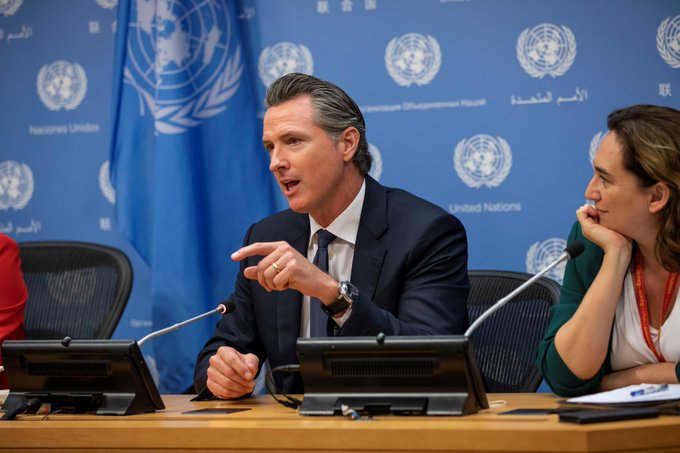Experts assess Gov. Newsom’s recent $920 million allotment to fight homelessness

Gov. Gavin Newsom speaks at a United Nations conference. Newsom announced new measures to combat homelessness Feb. 24. (Courtesy of Office of the California Governor/Wikimedia Commons)

By Lucine Ekizian
April 6, 2025 11:16 p.m.
California Gov. Gavin Newsom announced new measures to combat homelessness Feb. 24.
Newsom said in a press release that the state will allocate $920 million in funding to local municipalities so they can clear out encampments and combat homelessness. He also announced a new accountability website to track the building of new housing and California’s behavioral health systems.
Sarah Hunter, the director of the RAND Center on Housing and Homelessness, said the majority of the funding is not new, as it comes from grants for the Homeless Housing, Assistance and Prevention program, which was established in 2019 and aims to make local grant allocations to prevent homelessness.
In addition to HHAP funding, the money includes contributions from the U.S. Department of Housing and Urban Development, she added.
“It demonstrates his continued support to provide funding to address our homelessness crisis,” Hunter said. “California has the largest population of people living unsheltered in the country.”
Hunter also said continuing the momentum of long-term funding is vital to combating the homelessness crisis in California, adding that the money is particularly necessary for Los Angeles.
Gary Blasi, a professor emeritus of law at UCLA School of Law, said the $920 million in funding amounts to about $500 for every person experiencing homelessness in California.
“The bucket is leaking a lot more than is going on into the bucket,” Blasi said. “$920 million is a lot of money for the state, but $500 is not a huge amount of money for an unhoused person.”
Newsom’s policies have previously focused on drug and alcohol addiction among unhoused people, Blasi said, through programs such as Community Assistance, Recovery and Empowerment Court – a resource to help those with mental health disorders and substance abuse issues.
However, Blasi added that the dominant factors for homelessness in California are extreme poverty and income disparities. He added that focusing on subsidizing income might help lift people out of homelessness most.
“They’ve (pilot projects) all confirmed, for example, that when you give people money, they do not spend more money on drugs. They do not spend more money on alcohol. They don’t even spend more money on cigarettes. They tend to spend money on housing and food,” Blasi said. “It’s a hard sell to the public because there’s this notion that it’s individual weakness that causes people to be homeless.”
A variety of data exists on the new accountability website, including the number of housing units completed, how much unsheltered homelessness has changed and participation in full-service partnership behavioral health services, Hunter said. She added that although publishing the data is a good starting point, most of the data is on different time scales, which makes visualizing progress difficult.
“If we’re going to do better monitoring, we need to know, ‘Are these trends going up? Are they going down?’ and to see them in relation to the investment spent,” Hunter said.
Brandon Greene, the director of policy advocacy at the Western Center on Law and Poverty, said because there is already data pointing toward solutions to combat homelessness, such as subsidizing income, the website is not effective in directing policy.
He added that part of the criteria that communities must meet to acquire the funding – local municipalities sweeping encampments – seeks to criminalize the homeless population.
“What cities are actually doing is criminalizing people for having nowhere to go while also not having anywhere for them to go,” Greene said.
Other than focusing on income, Blasi said other unexplored territories of combatting homelessness include the availability of land to build new housing and how housing will be produced. He added that UCLA’s far distance from a homeless shelter shows the limited availability of accessible shelters for people experiencing homelessness.
“At UCLA, one of the things we’ve learned is that if you encounter a homeless person and you want to find emergency shelter for them, the closest available public shelter is at Lancaster,” Blasi said. “It’s 60 miles or more.”
Hunter added that Newsom is yet to declare homelessness a state emergency, which could give the government more authority for action on the crisis, rather than just funding.
“We’ve been just throwing money at the problem with not having any one entity responsible for it or accountable,” she said.




